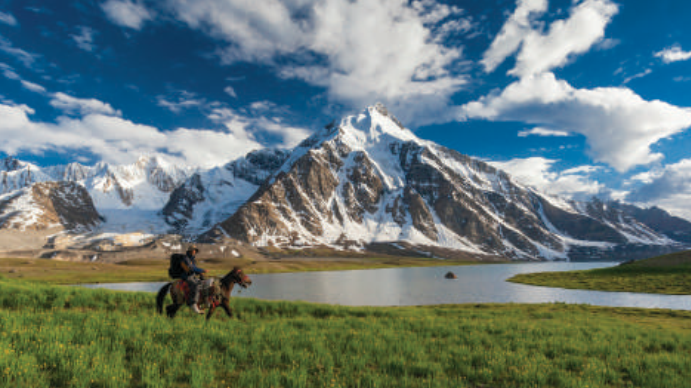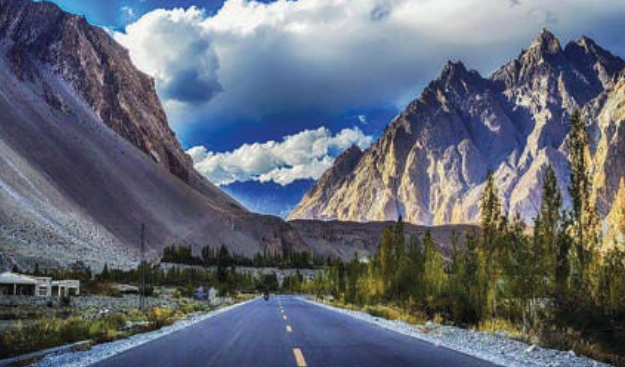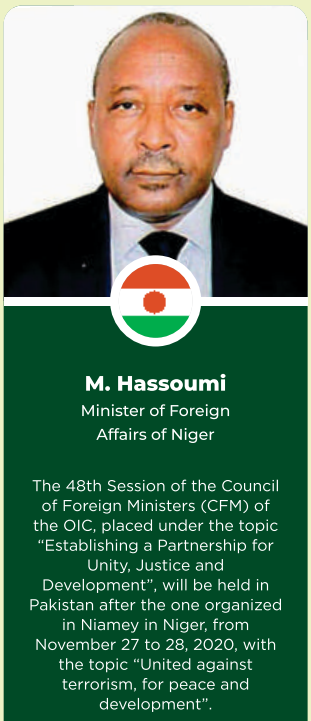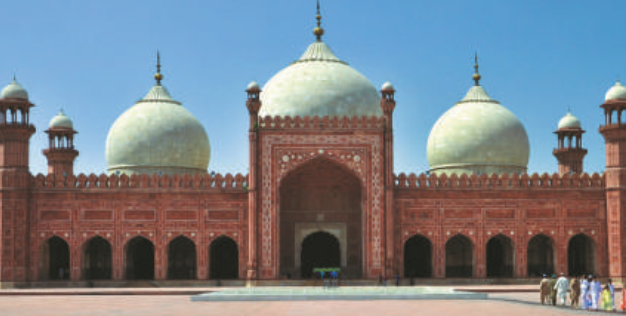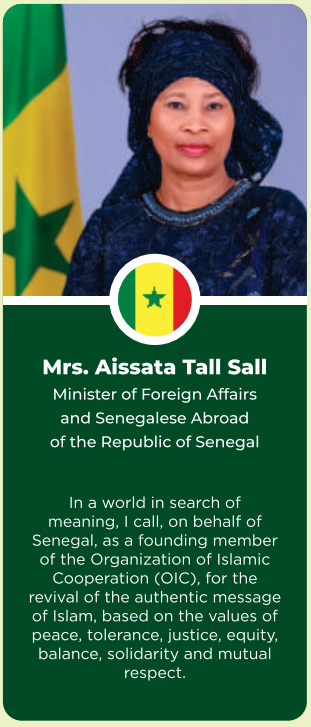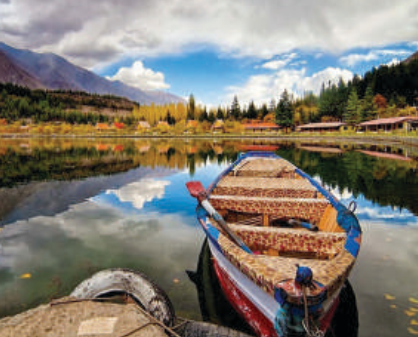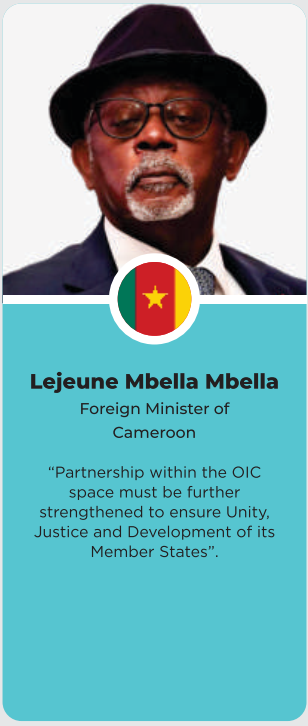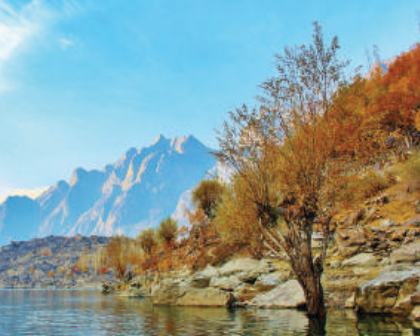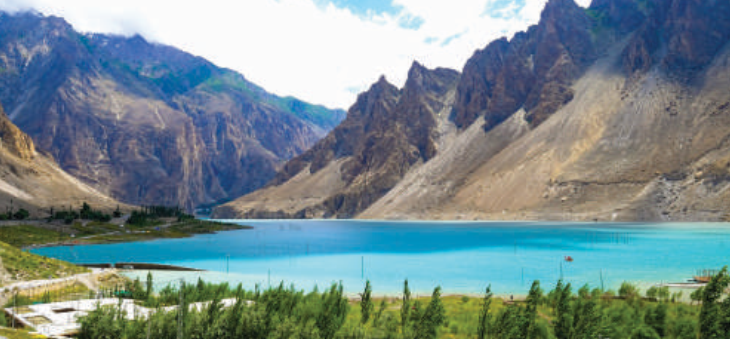
By Dr. Hassan Daud Butt
Govt is especially focusing on development of integrated tourism zones and infrastructure, particularly roads connectivity, motorways and highways to augment sector.
Tourism is an organized, regular and multidimensional business activity, which has grown to the level of industry of worldwide importance. Tourism activities contribute towards economic growth and are internationally regarded as a vehicle for generating employment. Tourism has also been identified as a source of regional integration and balanced regional development that can contribute towards increased people-to-people interaction, improved trade and economic cooperation and linkages for the mutual benefit of economies.
The economic benefits of tourism are usually felt at the macro and micro levels. Tourism is also expected to foster economic growth through foreign exchange earnings through an improvement in citizens’ well-being in the areas of job creation and income distribution and act as an engine of growth.
Tourism is also expected to foster economic growth through foreign exchange earnings through an improvement in citizens’ well-being in the areas of job creation and income distribution and act as an engine of growth.
Looking at the world tourism industry, according to the World Tourism Organization, the last two years have seen declined tourism, however as the COVID-19 restrictions are lifted, this will result in increased tourist arrivals creating enormous opportunities in the sector. As a conduit to regional integration initiatives, Pakistan is naturally endowed with natural beauty, historic and cultural resources with beauties from the world’s highest mountains of Himalayas and Karakoram to scenic valleys and rich hospitality.
The focus of the Government is on the development of integrated tourism zones and the development of infrastructure particularly roads connectivity, motorways and highways are adding value to the tourism sector. Every year, a large number of tourists from all over the country as well as from across the globe visit the scenic destinations and the number is expected to grow as in the next phase of CPEC, tourism is being projected as a pillar of cooperation under the great initiative. Against this backdrop, it is imperative to understand the relationship and impact of regional integration on the tourism industry of Pakistan with special reference to CPEC and further exploit the potential advantages of the tourism resources in the regions including coastal tourism.
As far as Pakistan is concerned, it has a rich and diverse set of natural and tangible and intangible cultural tourism resources located in both rural and urban areas and is blessed with natural beauty, historic and cultural resources which offers a journey of unbridled joy and beauty from the world’s highest mountains of Himalayas and Karakoram to scenic valleys and rich hospitality and, therefore, has the potential to become a tourist destination for both domestic and international tourists in the region.
The KP province has a varied landscape ranging from rugged mountains, valleys, hills and dense agricultural farms. The region is well known for its ancestral roots. There are several Buddhist archaeological sites from the Gandhara civilization such as Takht Bhai and Pushkalavati. There are many other Buddhist and Hindu archaeological sites including Bala Hisar Fort, Butkara Stupa, Kanishka Stupa, Chakdara, Panjkora Valley and Sehri Bahlol. Similarly, GB province in the north has huge tourist potential due to its exotic mountain beauty.
Punjab is known for its ancient cultural heritage as well as its religious diversity. The lands of Punjab have been home to a number of Sufi Shrines, Hindu Temples and holiest sites of Sikhism. Punjab represents a unique mixture of Mughals, Sikhs and Colonial architecture and Sindh besides the historic connections have a maritime tourism spatial structure. Overall, Pakistan is blessed with historical sites, different climates, natural areas, cultures, customs, arts, foods, languages, ancient buildings and monuments, etc.
Tourism in Pakistan ranges from religious tourism, adventure tourism to archaeological and historical tourism. According to a World Bank report, 4.45 million tourists visited the popular sites of Galliyat, Naran, Kalam, Kumrat in the province of Khyber Pakhtunkhwa alone and their economic contribution exceeded half a billion dollars and created nearly 10,000 local jobs in the year 2018-2019. During the same period, several international travel bloggers visited Pakistan and shared their experiences with the international community while emphasizing the beauty of hospitable Pakistan.
The focus of the federal and provincial government is on the development of tourism zones and the development of infrastructure, particularly roads connectivity, motorways and highways, for adding value to the tourism sector of the country. The tourism sector is one of the priority sectors of and the government intends to leverage and capitalize on its outstanding tourism resources and significant potential for nature tourism, adventure tourism and religious tourism. Initiatives like the establishment of Border Bazars points which can not only be used for business and trade but also provide the opportunity for tourists to visit these markets at borders are being explored.
Every year, a large number of tourists from all over the country as well as from across the globe visit scenic destinations. These scenic areas are open to both local and international investors to benefit from the huge potential for the creation of recreational and adventure sports facilities and cultural/archaeological/ religious tourism. Some of which can be the development of tourism zones, chairlifts, cable cars, theme/adventure parks, tree to tree hopping, zip-liner and water sports and other recreational activities.
Similarly, Tourism is one of the priority sectors for regional integration and connectivity in terms of China Pakistan Economic Corridor (through 1 + 5 tourism plan), Central Asia Regional Economic Cooperation (CAREC) and KPEC (Khyber Pass Economic Corridor) is transforming the region increasing its potential to attract tourists from across the borders as the strengthened regional ties give Pakistan the advantage of diversifying its tourism industry, as well as improved cross-border cooperation, can promote tourism and travel corridors.
Pakistan is naturally endowed with natural beauty, historic and cultural resources with beauties from the world’s highest mountains of Himalayas and Karakoram to scenic valleys and rich hospitality.
Today, Pakistan is improving the tourism public service system in cross-border areas, with particular attention to the services of public information, convenient transportation, security protection and other services benefiting the local and visiting tourists.
Attention is also being given to the range of issues including integration of tourism development into national plans, participation of the community, tourism entrepreneurship and bringing several projects in public-private partnership investment and for management and development in tourism come from private sector driven initiatives.
The increased focus of the Government is also creating jobs at a fast rate and it is also believed that the development of tourism-related infrastructure can also benefit citizens and not just tourists. The way Dubai’s tourism industry is reviving through the EXPO 2020 alone gives reason for countries like Pakistan to explore and learn from such events to rejuvenate the vital tourism industry.
Pakistan also needs to consider the potential advantages of the tourism resources in the regions along the China-Pakistan Economic Corridor and also actively construct the “2+1+5”, which includes two centers, one axis and five zones: Karachi Port and Gwadar Port as the two centers, and the coastal tourism belt as the development axis, and five tourist zones. The development of Blue Tourism will work as a catalyst in the Revenue of Pakistan like Singapore, Malaysia and many other countries so, investment in this regard should be encouraged either by the private sector or by a public-private partnership and joint ventures.
The government is also trying to leverage the natural endowment by developing integrated tourism zones based on various natural resources, routes, religiously and culturally attractive places, development of Museums, Archeology and heritage sites and connecting it with the ITSEZs to build the technological infrastructure and digitalization needed to stabilize the tourism sector. The government efforts to have these zones in PPP mode through a facilitation mechanism of one window will enable investors to understand the existing approval process. Similarly, by connecting the Gilgit Baltistan region with North-Western China and Gwadar with neighboring western ports.
Tourism can provide various opportunities to Pakistan to transcend its limitations and transform as one of the region’s major tourism destinations. Through the regional integration initiatives, Pakistan can also address the challenges to local HR development for delivering quality services.
This will potentially encourage sound utilization of local resources and thus enhance productivity along with inter-sectoral linkages. Through a regional approach, institutions or planning bodies responsible for tourism can be established.
This would also establish meeting points for experts with various skills required for tourism development to work closely with each other for achieving greater economic benefit.
Despite several studies on regional integration and tourism industry, much research has not been done with regards to understanding the impact of regional integration on the tourism sector and therefore, regional forums like South Asian Association for Regional Cooperation (SAARC), SCO, OIC, BRI, etc., must explore possibilities for tourism cooperation for promotion of economic activities, people to people contacts and lasting peace and rapid economic growth by welcoming cooperation with open doors and ensuring benefits for all as the only way for addressing the challenges of extreme poverty.

The writer is the Chairman of KP-Board of Investment & Trade

